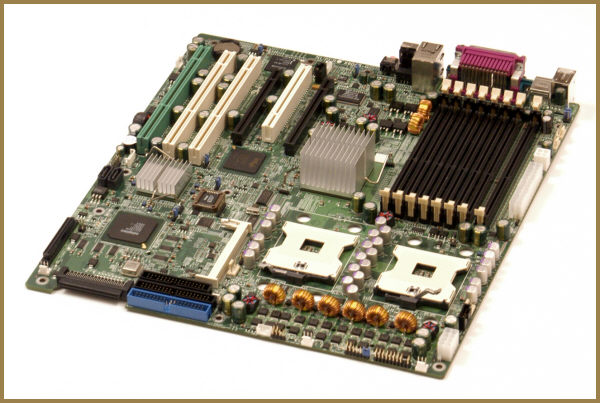New motherboard required
Since PCI is a parallel technology and PCI to PCI Express is serial, there's no such thing as an adaptor for PCI-to-PCI-Express. To obtain PCI Express connectivity, a new-generation motherboard will be required.Intel-based motherboards were the first to offer PCI Express, typically using the Intel 915 and 925 chipsets and running only Intel processors.
Most Intel-based motherboards have a single 16-lane PCI Express slot for graphics, along with two or three of the single-lane variety for other peripherals, plus a couple of PCI slots for backward compatibility.
However, upgraders should bear in mind that motherboards with these Intel chipsets also have a new 775-pin processor socket and, in many cases, support a new kind of memory called DDR2, rather than the current DDR.
A couple of recent chipsets for Intel’s Xeon workstation and server processor also support PCI Express. The one most relevant to video editors is Intel’s E7525, codenamed Tumwater, which is aimed at desktops.
This supports the new 800MHz Front Side Bus Xeons and DDR2 memory. But it also has fully fledged PCI Express support and motherboards are starting to arrive from companies other than Intel. Supermicro’s X6DAE-G2 is one and has two PCI Express slots. One is 16-lane and the other is four-lane but the same size as the 16-lane to allow a second graphics card to be used .

that's intended for adding a second PCI Express graphics card to run in parallel
Nforce 4 supports two 16-lane PCI Express slots, offering the ability to run two fast PCI Express graphics cards side-by-side – which is great for gamers and may turn out to be no less useful for video editors.
DFI was one of the first to incorporate Nforce 4 and its LanParty UT nF4 SLI-D PCI Express motherboard has been well received by reviewers. It offers four PCI Express slots (two of them x16, one x4 and one x1), plus two standard PCI slots, and can run two fast graphics cards at once, and use a low-cost AMD Sempron processor or an Athlon 64 FX or 64 CPU.









